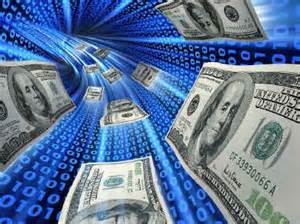 Advances in information technology have not only transformed the media and the nation’s culture but also our commercial sector. And just as recent events indicate that even more change is on the way in media delivery, other recent events indicate that the financial transactions sector, including banking, is about to undergo similarly foundation-shaking changes.
Advances in information technology have not only transformed the media and the nation’s culture but also our commercial sector. And just as recent events indicate that even more change is on the way in media delivery, other recent events indicate that the financial transactions sector, including banking, is about to undergo similarly foundation-shaking changes.
Writing at TechPolicyDaily, Bret Swanson argues that Apple Pay may prove to be “a much bigger phenomenon than mobile sandwich purchases.” The large user base for Apple devices means that Apple Pay can potentially be used for a much wider variety of transactions than just retail purchases, he argues. But the much more exciting and indeed revolutionary likelihood is that Apple Pay and other digital transaction technologies could transform banking by overcoming age-old problems of deposit security and liquidity, creating “a theoretically safe [type of] bank that focuses on highly secure deposits, deep liquidity, and payments, not loans, derivatives, and off-balance sheet activities.”
Swanson quotes John Cochrane of the University of Chicago on the potential stupendously salubrious effects on the economy this could have:
‘[L]iquidity’ no longer requires that people hold a large inventory of fixed-value, pay-on-demand, and hence run-prone securities. With today’s technology, you could buy a cup of coffee by swiping a card or tapping a cell phone, selling two dollars and fifty cents of an S&P 500 fund, and crediting the coffee seller’s two dollars and fifty cents mortgage-backed security fund. If money (reserves) are involved at all—if the transaction is not simply netted among intermediaries—reserves are held for milliseconds. In the 1930s, this was not possible. We could not instantly look up the value of the S&P 500 (communication). There was no such thing as an index fund, so stock sales faced informational illiquidity and large bid-ask spreads (financial innovation). And transactions costs would have ruled out the whole project (computation, financial innovation). Closer to current institutions, electronic transactions can easily be made with treasury-backed or floating-value money-market fund shares, in which the vast majority of transactions are simply netted by the intermediary. When you buy something, your account loses an electronic dollar and the seller’s account gains one, and no security actually changes hands.
On the supply end, $18 trillion of government debt is enough to back any conceivable remaining need for fixed-value default-free assets. Three trillion dollars of interest-paying reserves can easily be $6 trillion of reserves. We can live Milton Friedman’s (1969) optimal quantity of money, in which the economy is awash in liquidity. This optimal quantity will have financial stability benefit far beyond its traditional elimination of shoe-leather costs. Again, technology has fundamentally changed the game: instant communication means that interest-paying money is now a reality, so we can have the optimal quantity without deflation.
Translating that into nontechnical English, what Swanson and Cochrane are saying is that the ability to make instant, highly informed exchanges of value can solve the classic economic problems caused by the unreliability of currency. That won’t bring on utopia, of course, people being people, but it will surely make for a more flexible investment system and will far better enable money to reach its best uses in the economy, thanks to the ability these systems will create to bypass the heavy hand of government regulation and manipulation of the economy. That will also help remedy the increases in economic inequality the nation as endured as government regulations and crony capitalism have concentrated money in fewer and fewer hands.
All of this will remain true, of course, only until the government catches up with more unwise regulations, but in the meantime it will be a huge change from the nation’s current economic sclerosis.


Great article Sam, thanks for linking. This is an under-the-radar and abstract topic, and therefore something our economically illiterate media is unwilling or unable to report. But if Swenson and Andreesson are right that there will be more financial innovations in the next three years than in the last 20, it could be a game changer.